Incognito mode, or Private Browsing, is a privacy setting in your browser that lets you surf the web more privately. But how private is it?
We explain what Incognito mode is, how it works, and how you can use it to enhance your privacy. We’ll also look at what it doesn’t do and what you need to really browse the internet privately.
What is Incognito mode (Private Browsing)?
What does Incognito mode do?
Is Private Browsing really private?
Why go Incognito?
How does Incognito mode work?
Chrome: How to go Incognito
Edge: How to use InPrivate
Firefox: How to use Private Browsing
Safari: How to use Private Browsing
How to go Incognito on Android and iPhone
Can you see your Incognito history?
How to delete your Incognito history
How to browse privately with a VPN
What is Incognito mode (Private Browsing)?
Incognito mode, also known as Private Browsing, is a privacy setting in browsers that allows you to surf the web without leaving a record of where you’ve been on your computer or smartphone.
With Incognito mode or Private Browsing turned on, your browser doesn’t save the addresses (URLs) of the pages you’ve visited, the text you entered in any website forms, or any cookies(nova janela) on your device. That means the sites you’ve visited won’t be visible in your browser’s history.
The most popular browsers all have this setting but give it slightly different names:
- Incognito mode (or Incognito window/tab) in Google Chrome
- InPrivate (or InPrivate window/tab) in Microsoft Edge
- Private Browsing (or Private window/tab) in Apple’s Safari and Mozilla’s Firefox
What does Incognito mode do?
Incognito mode stops your personal browsing history from being saved on your computer, tablet, or smartphone so that no one who uses that device after you can see it.
What happens when you go Incognito?
If you surf the web Incognito, when you close all your private windows, your browser won’t save:
- The addresses (URLs) of the sites you’ve visited
- Your cookies, which contain personal information like login details and language preferences, and other temporary files
- Any information you’ve entered in online forms
- Any permissions you’ve given websites, for example, to use a camera for a video call
What Incognito mode doesn’t do
Going Incognito prevents anyone else using your device from seeing your browsing history, but there are many other ways you can be tracked:
- Your internet service provider (ISP) can still see everything you do online.
- Websites can see your IP address(nova janela) (the unique address that identifies your device on the internet), which gives them an idea of your physical location.
- Your employer or school may see what you do online if they supplied your device or control the network you use.
- Any files you downloaded while Incognito will still be available in your Downloads folder or wherever you saved them.
- Any bookmarks you save will still appear in your Bookmarks or Favorites.
Overall, Incognito mode won’t enhance your privacy on the internet nor add any security against attacks or attempts to access your private data.
Is Private Browsing really private?
Incognito mode/Private Browsing gives you some privacy as your browser doesn’t save your browsing history on your computer, smartphone, or tablet. So anyone using it after you can’t see where you’ve been online.
But ISPs and governments, not to mention your employer or school, may still be able to track you in some way whether you’re Incognito or not. And if you log in to any websites while private browsing, those sites will obviously know you’re there.
Remember, too, that if you sign into any Google app, Google’s Chrome browser will start saving your cookies and tracking you again even if you’re browsing privately. This is partly why Google agreed to pay a multi-billion dollar settlement over its false advertising surrounding Incognito mode(nova janela).
In short, Incognito mode or Private Browsing gives you some privacy on the particular device you’re using. It doesn’t make you private or anonymous online.
Why go Incognito?
Despite the name, Incognito mode was designed mainly to make it easier to use shared computers, not to hide your identity. Here are instances when it can be useful:
- Sharing devices: You can browse privately on a shared device, like a home computer, and hide where you’ve been online. For example, if you’re looking for a surprise gift for a family member, you don’t want your search history to be visible with ads for it popping up on the family computer. Or you may want to research a sensitive topic, like a medical question you’d rather keep to yourself.
- Using a public computer: Your browser won’t remember what you enter in website forms while you’re Incognito. That means you won’t leave any sensitive personal details, like financial information, for others to see (though it’s best not to enter financial details on a public computer at all).
- Signing in to multiple accounts: As Incognito mode doesn’t store cookies and site data, you can log in to more than one account with the same provider. If you’re logged in to your personal email account, for example, you could log into a work account on the same computer.
- Looking for better deals: Travel companies, like hotels and airlines, rely on cookies to see how often you check for flights and rooms and may increase their prices accordingly. As cookies aren’t saved when you’re Incognito, you should be offered the best prices.
- Getting around paywalls: Like airlines, news sites use cookies to keep track of how many times you’ve visited the site. If you can’t read a news story because you’ve reached your article limit for the month, try accessing the site Incognito.
How does Incognito mode work?
Incognito mode/Private Browsing works the same way on all major browsers. To use it, you open a new Incognito or private window. Any tabs you open in that window will also be Incognito.
To exit Incognito mode, simply close all your private windows.
Chrome: How to go Incognito
Turn on Incognito mode
Use keyboard shortcut Ctrl-Shift-N (Windows or Linux) or Command-Shift-N (macOS) to open a new Incognito window. Or click on the vertical ellipsis on the top right and choose New Incognito window.
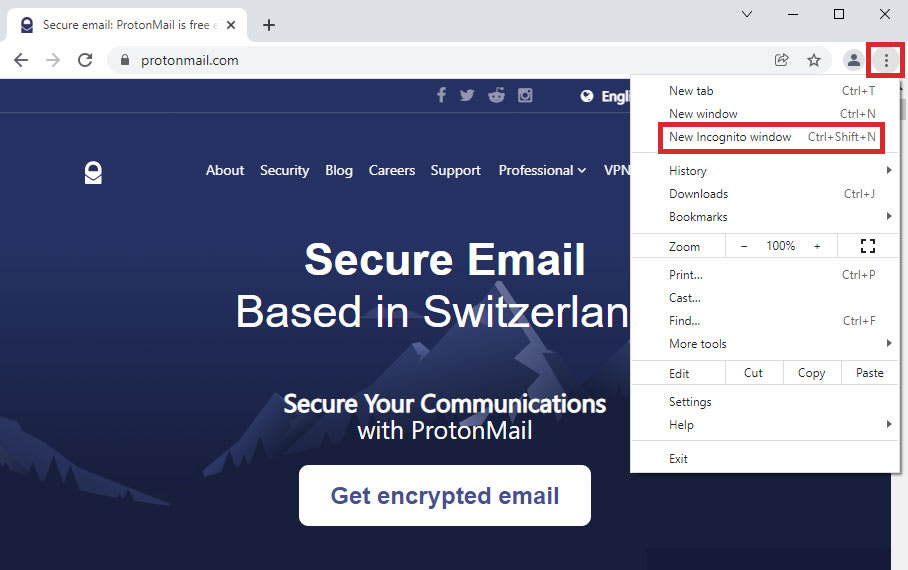
That will open a new Incognito window with the header “You’ve gone Incognito” and the hat-and-glasses “spy” icon.
Any tab you open in this window will also be Incognito, so no browsing history, cookies, or other site data will be saved(nova janela) when you close all your Incognito windows. To prevent cross-site tracking, make sure the Block third-party cookies option is switched on (see image below), which is the default setting.
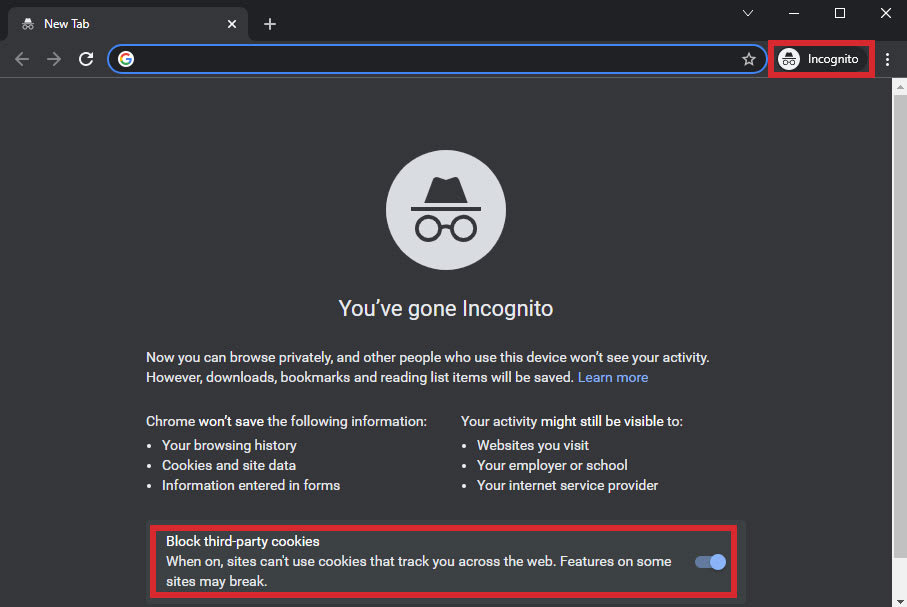
Close Incognito mode
To exit Incognito mode, close all the Incognito windows you have open in the usual way: Click X in the upper right corner on Windows or Linux or the red dot in the upper left corner on macOS.
Learn how — and why — to leave Google(nova janela).
Edge: How to use InPrivate
Turn on InPrivate
Use keyboard shortcut Ctrl-Shift-N (Windows or Linux) or Command-Shift-N (macOS) to open a new InPrivate window. Or click on the vertical ellipsis on the top right and choose New InPrivate window.
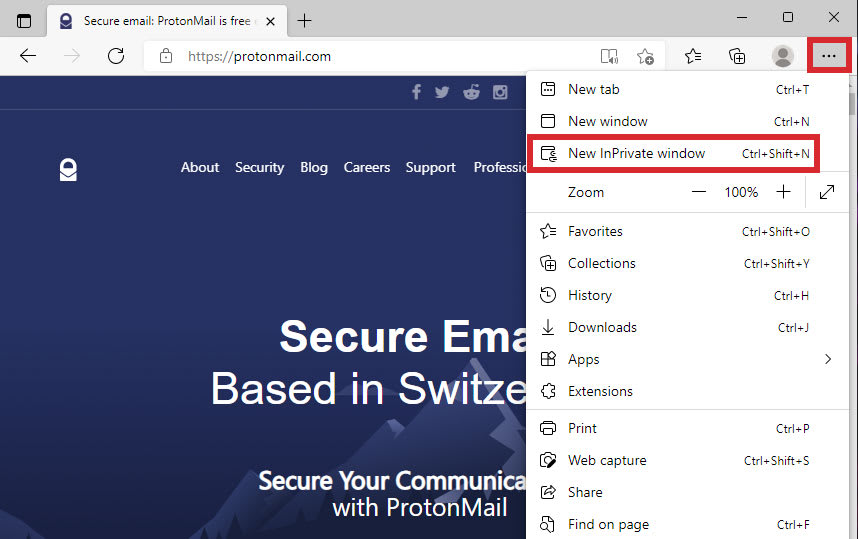
An InPrivate window will appear with the header “InPrivate browsing” and the blue InPrivate oval at the top right.
Any tab you open in this window will also be InPrivate, and all browsing history, cookies, and other site data will be deleted(nova janela) when you close all InPrivate windows. To block third-party tracking, check that the Always use “Strict” tracking prevention when browsing online option is switched on.
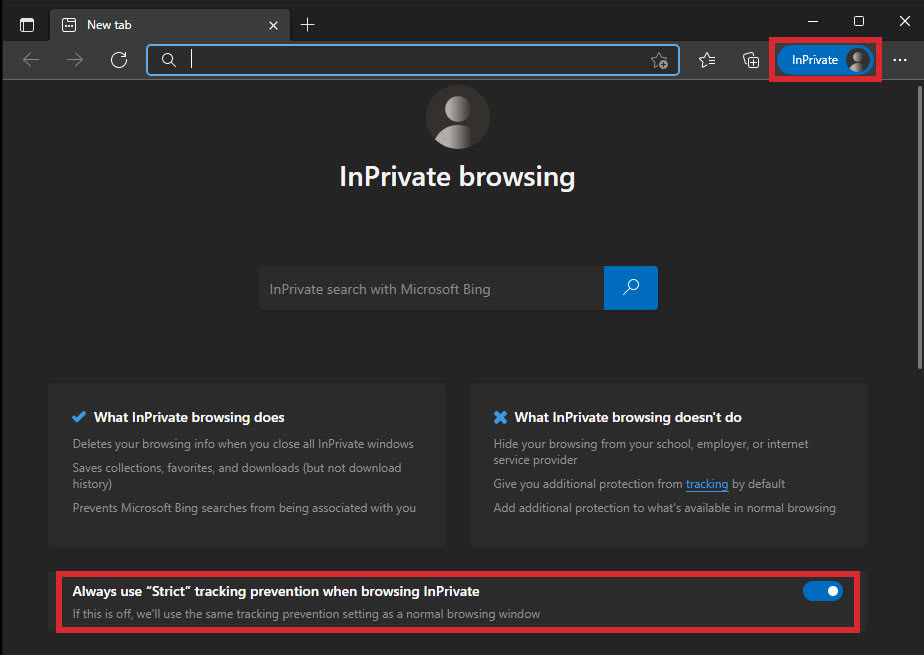
Exit InPrivate
To exit InPrivate mode, close all the InPrivate windows you have open in the usual way: Click X in the upper right corner on Windows or Linux or the red dot in the upper left corner on macOS.
Firefox: How to use Private Browsing
Turn on Private Browsing
Use keyboard shortcut Ctrl-Shift-P (Windows or Linux) or Command-Shift-P (macOS) to open a new private window. Or click on the vertical ellipsis on the top right and choose New private window.

That will open a new private window showing a purple mask and a “Private window” message. Any tabs you open in this window will also be private.
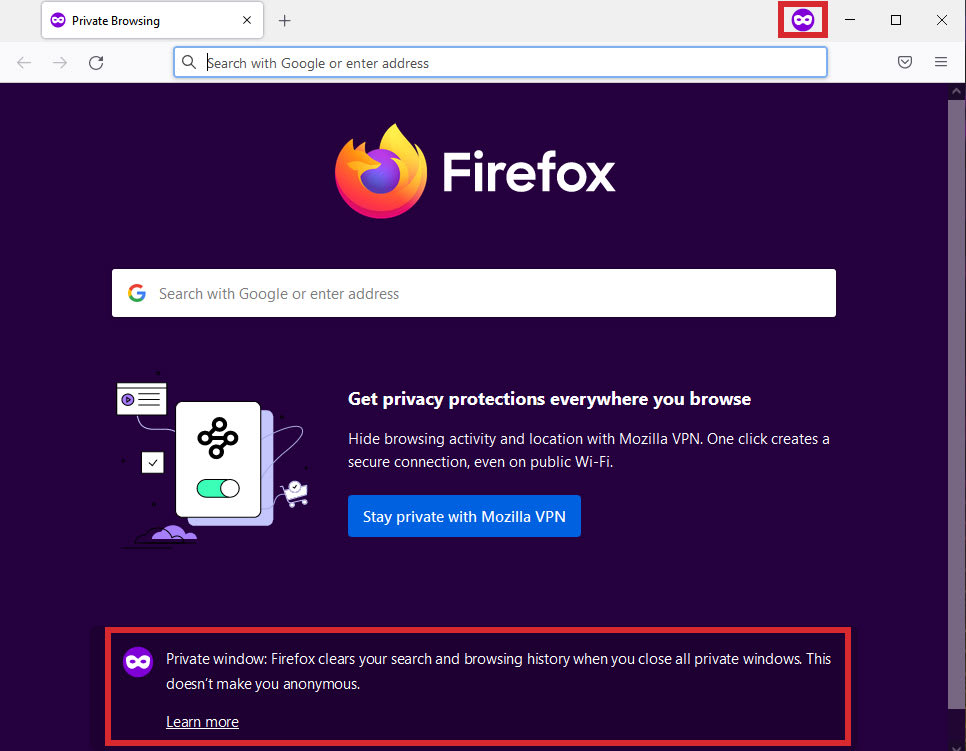
Note that Firefox now has a feature called Enhanced Tracking Protection(nova janela), which blocks third-party cookies and other cross-site tracking by default in a private window.
Exit Private Browsing
To exit Private Browsing, close all the private windows you have open in the usual way: Click X in the upper right corner on Windows or Linux or the red dot in the upper left corner on macOS.
Safari: How to use Private Browsing
Turn on Private Browsing (macOS)
Use keyboard shortcut Command-Shift-N to open a new private window. Or click on File → New private window.
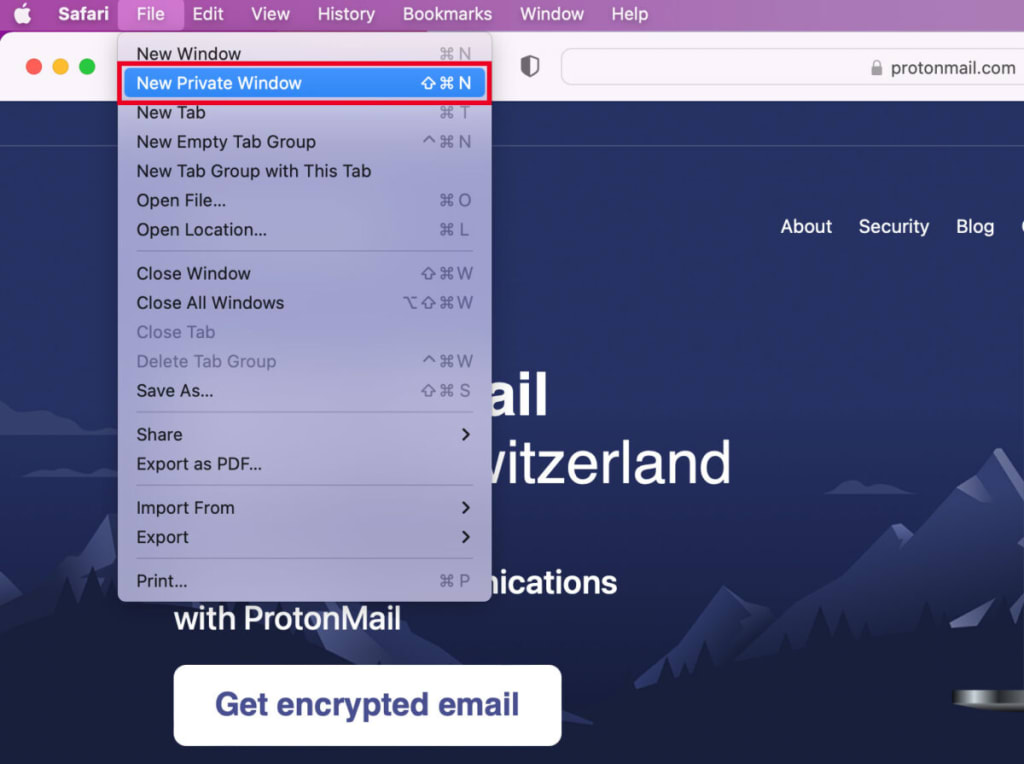
A new private window will appear with the “Private Browsing Enabled” header. Any tabs you open in this window will also be private.
Safari also has a Privacy Report(nova janela) that shows you a list of the known trackers that have been blocked. Click on the shield under “Privacy Report” to view the report.
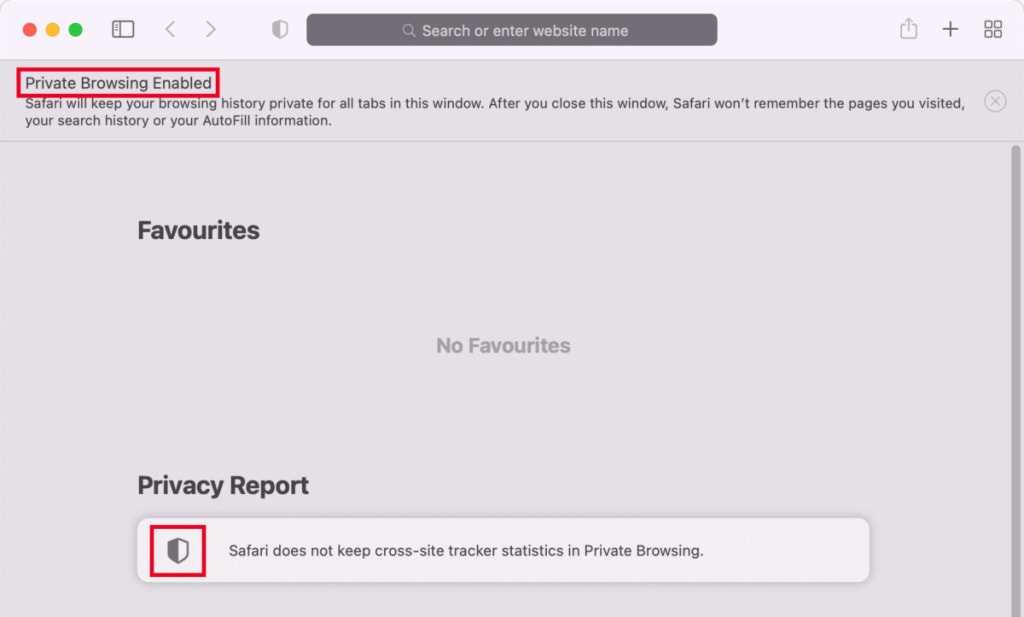
Exit Private Browsing (macOS)
To exit Private Browsing, close all the private windows you have open in the usual way: Click the red dot in the upper left corner.
How to go Incognito on Android and iPhone
You can use Incognito mode/Private Browsing on your Android device (smartphone or tablet) or your iPhone or iPad in the same way as on a computer.
Go Incognito on Android
Google Chrome, Microsoft Edge, and Firefox all have an Incognito/Private Browsing feature, and they all work in a similar way.
For example, to go Incognito in Google Chrome:
1. Open Chrome and tap the vertical three dots to the right of the address bar.
2. Tap New Incognito tab.
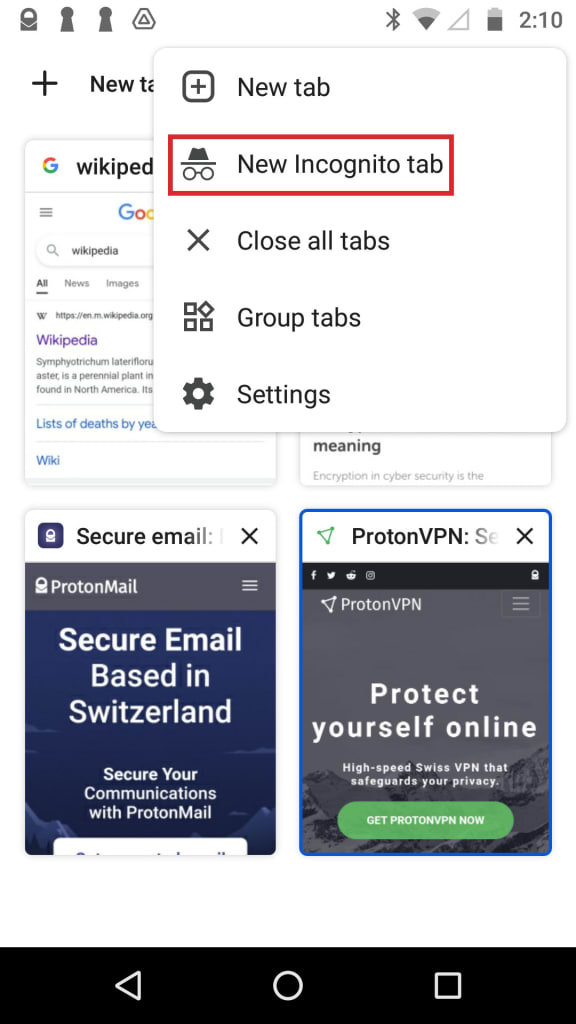
3. A new Incognito window appears with the message “You’ve gone Incognito”.
To close Incognito mode:
1. Tap the Switch tabs button at the top right.

2. You’ll see your open Incognito tabs on the right. Tap X at the top right of each tab to close them.
Turn on Private Browsing on iPhone or iPad
Google Chrome, Microsoft Edge, and Firefox all have an Incognito/Private Browsing feature on iPhone and iPad, and they work in a similar way to Apple’s own Safari browser.
To start Private Browsing on your iPhone or iPad in Safari:
1. Open Safari and tap the Tabs button.
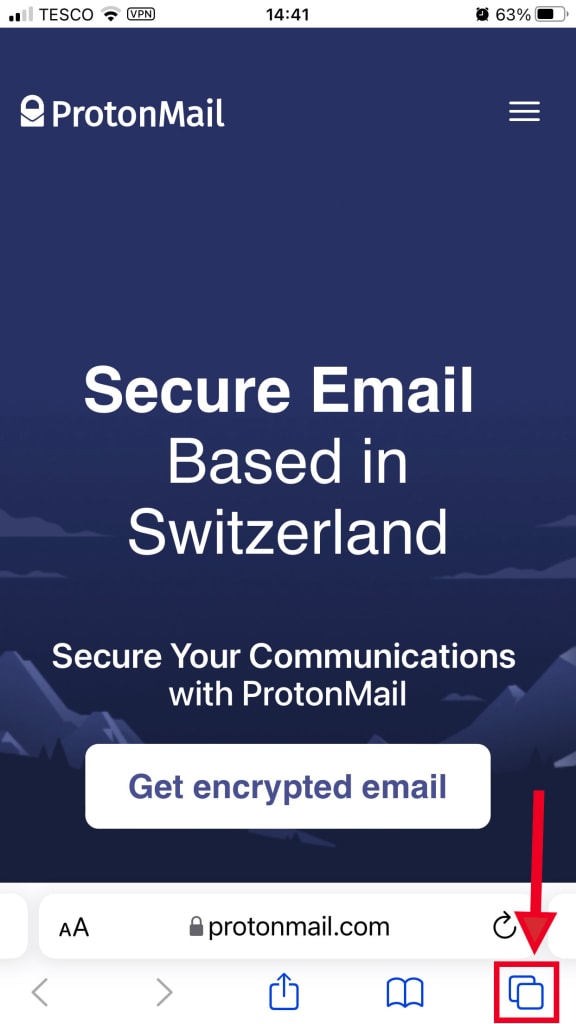
2. Tap [number] Tabs to show the Tab Groups list.
3. Tap Private and then Done.
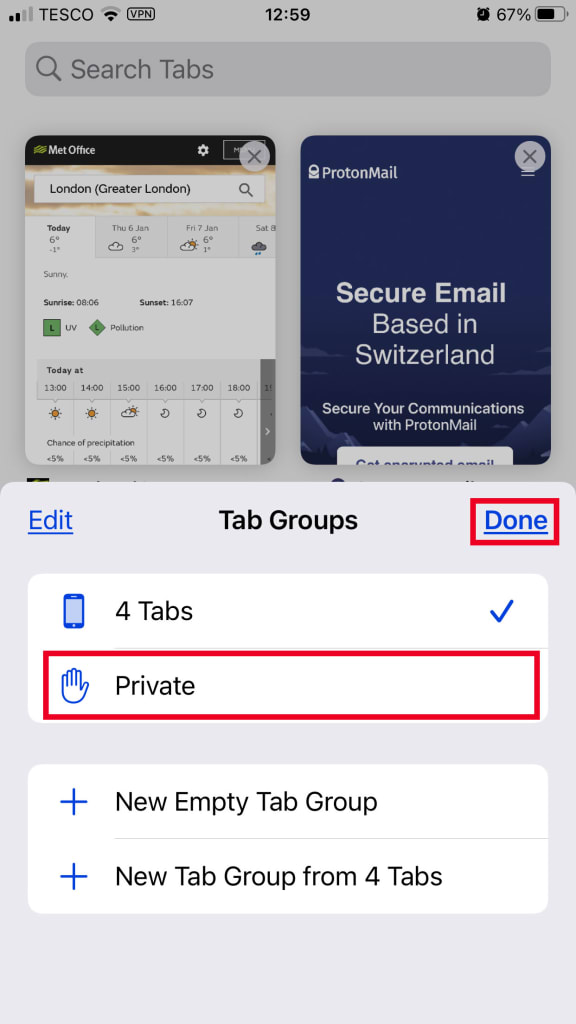
To exit Private Browsing:
1. Open Safari and tap the Tabs button.
2. Tap Private to show the private tabs you have open.
3. Tap X at the top right of each tab to close them.
Can you see your Incognito history?
When you use Incognito/Private Browsing, your browser doesn’t record your browsing activity. But that doesn’t mean there’s no trace of it left on your computer or smartphone.
Your device keeps a temporary database of the websites you’ve recently visited called a DNS cache(nova janela), which helps your browser access those sites more quickly next time you visit them.
While checking the DNS cache on a Mac requires a technical workaround, you can view the DNS cache on a Windows computer in three easy steps:
1. Enter cmd in the Windows search box on the bottom left and click on Run as administrator to open the command prompt.
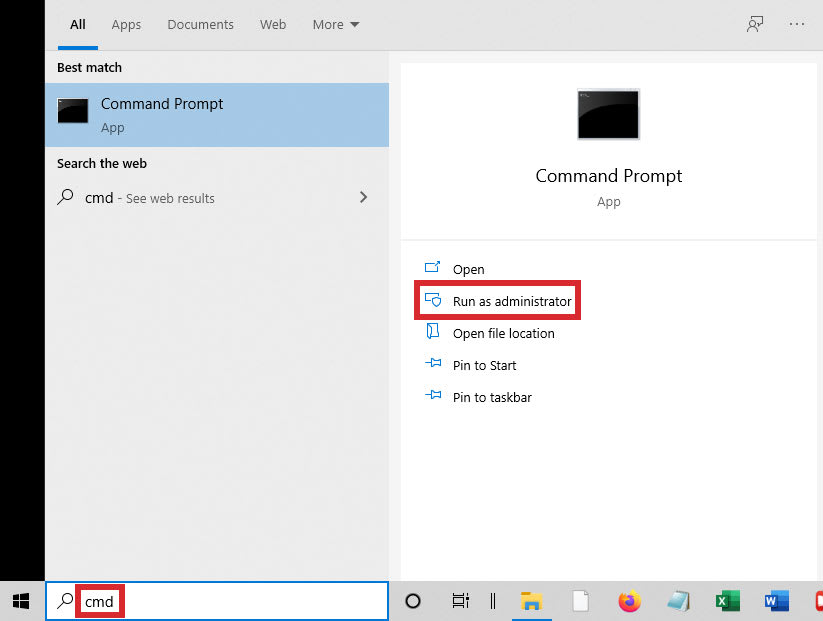
2. Click Yes if prompted (you may have to enter an administrator password if you’re using a standard account).
3. Type the command ipconfig/displaydns and press Enter to see your DNS cache history.
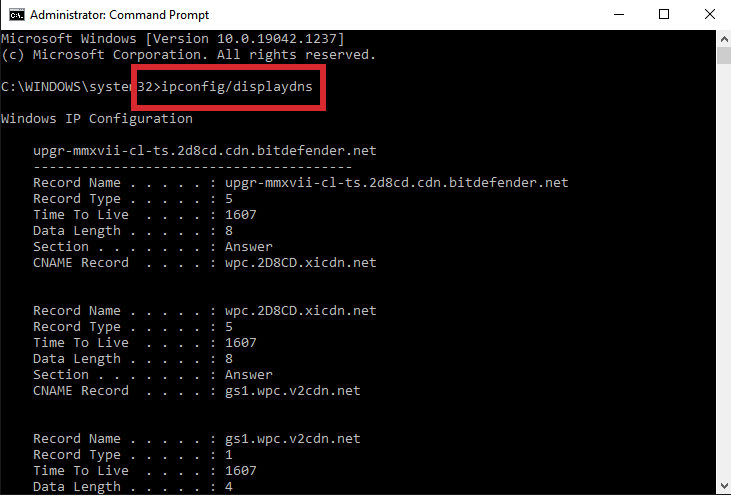
How to delete your Incognito history
Although your browser doesn’t save your browsing history while you’re Incognito, we’ve seen above how your device temporarily records where you’ve been online in its DNS cache, whether you’re Incognito or not.
But you can delete the contents of the DNS cache in both Windows and Mac.
Delete Incognito history on Windows 10
1. Enter cmd in the Windows search box on the bottom left and click on Run as administrator to open the command prompt.

2. Click Yes if prompted (you may have to enter an administrator password if you’re using a standard account).
3. Type the command ipconfig/flushdns and press Enter. You’ll see the message “Successfully flushed the DNS Resolver Cache”.
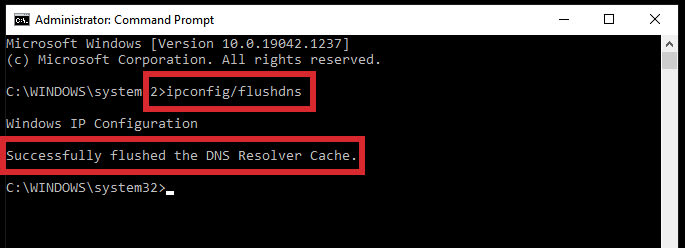
You’ve now cleared the DNS cache and deleted your browsing history from your device.
Delete Incognito history on Mac
1. Click on Go → Utilities.
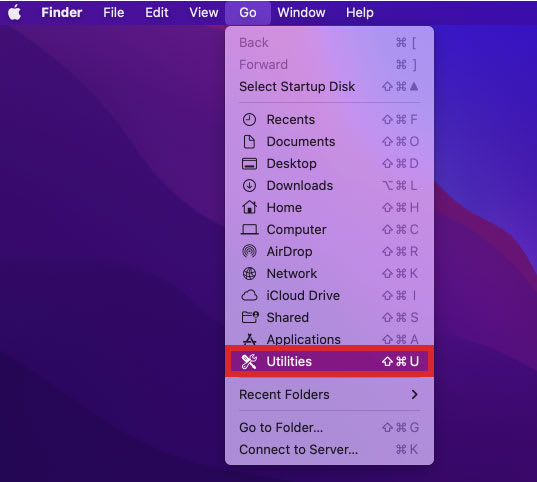
2. Open the Terminal app.

3. Type in or cut and paste the command sudo dscacheutil -flushcache; sudo killall -HUP mDNSResponder into the command-line window and press Enter.

4. Enter your password to flush the cache.
Unlike Windows, macOS does not give you a success message. Find out more about how to clear the DNS cache on different versions of macOS.
How to browse privately with a VPN
To sum up, going Incognito or using Private Browsing doesn’t protect your privacy online. It only protects you from other people sharing your computer, tablet, or smartphone by not saving your browsing history on that device.
An effective way to enhance your privacy online is to use a virtual private network (VPN)(nova janela). If you use a VPN:
- The websites you visit won’t know your real IP address or location.
- Your ISP can’t see what sites you visit and what you’re doing online, so they can’t sell your personal browsing history.
- Mass government surveillance(nova janela) by agencies like the NSA in the US, or GCHQ in the UK, won’t see what you’re doing online.
- Public WiFi providers can’t sell your browsing history to advertisers.
At Proton, we believe privacy and security are fundamental human rights. That’s why we provide a free Proton VPN plan(nova janela) for everyone. If you’d like to support our vision to build an internet where privacy is the default, please consider upgrading to a paid plan(nova janela) for more features or using Proton to deGoogle your life(nova janela).







